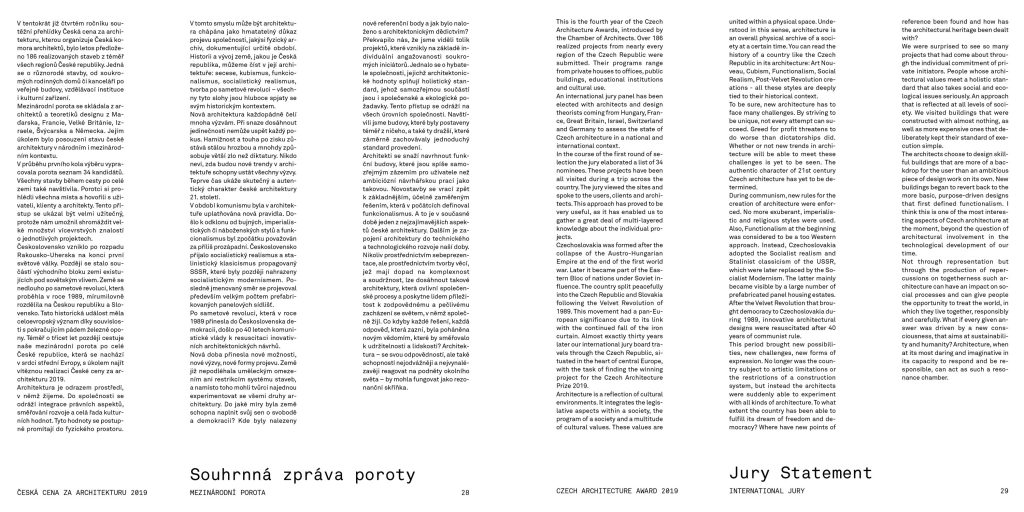Monument to Freedom and Unity, Berlin
Securing the remains of the Kaiser Wilhelm Memorial, construction of a colonnade and an ornamented column
| As a base for the memorial serves a three-dimensional diagram which visualises the process of the German reunification (1989-1990) in form of a vector graphic and can be experiences through an interactive user interface. |
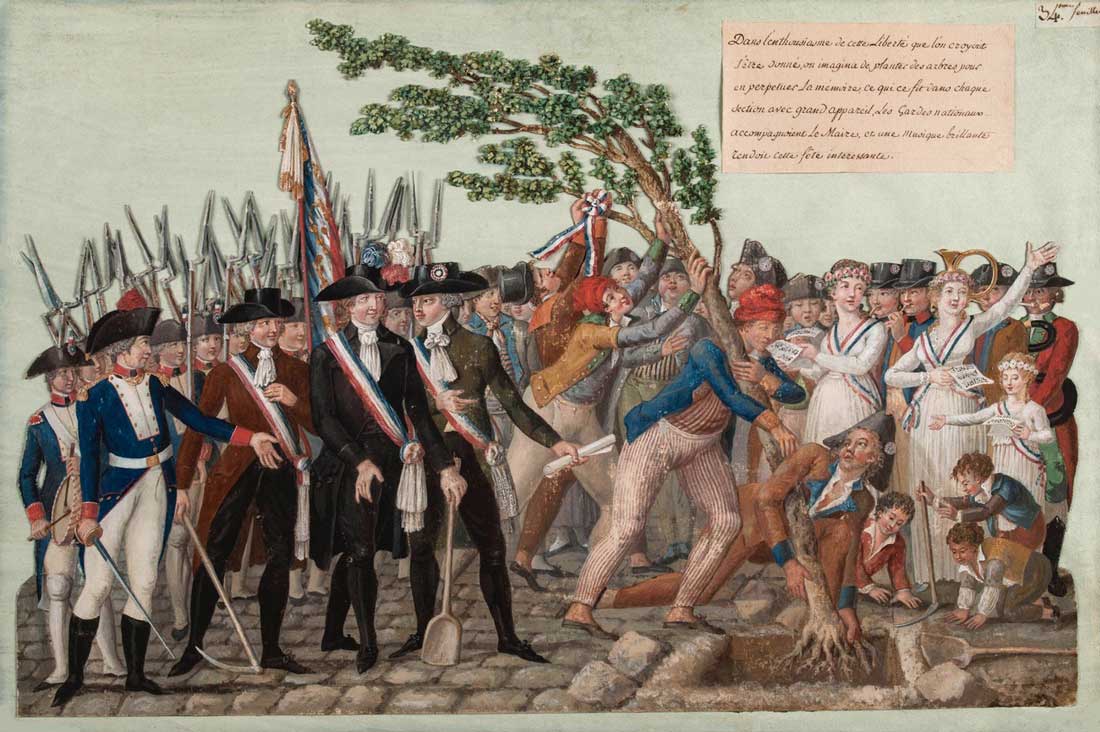
Jean-Baptiste Lesueur, The Planting of a Tree of Liberty (1790)

Rhizomatic process of the reunification
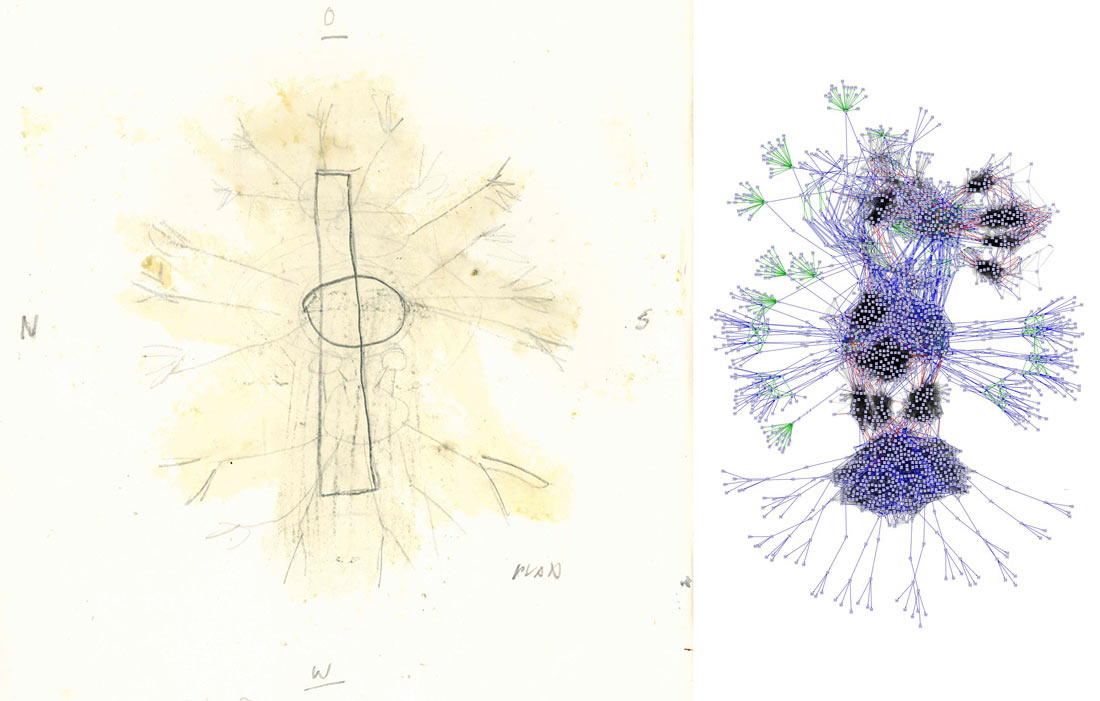
left: Imke Woelk: Vegetative model of the process, Pencil and oil crayon on paper, 29,7 x 21 cm, 2009
right: Network Visualization, 2009
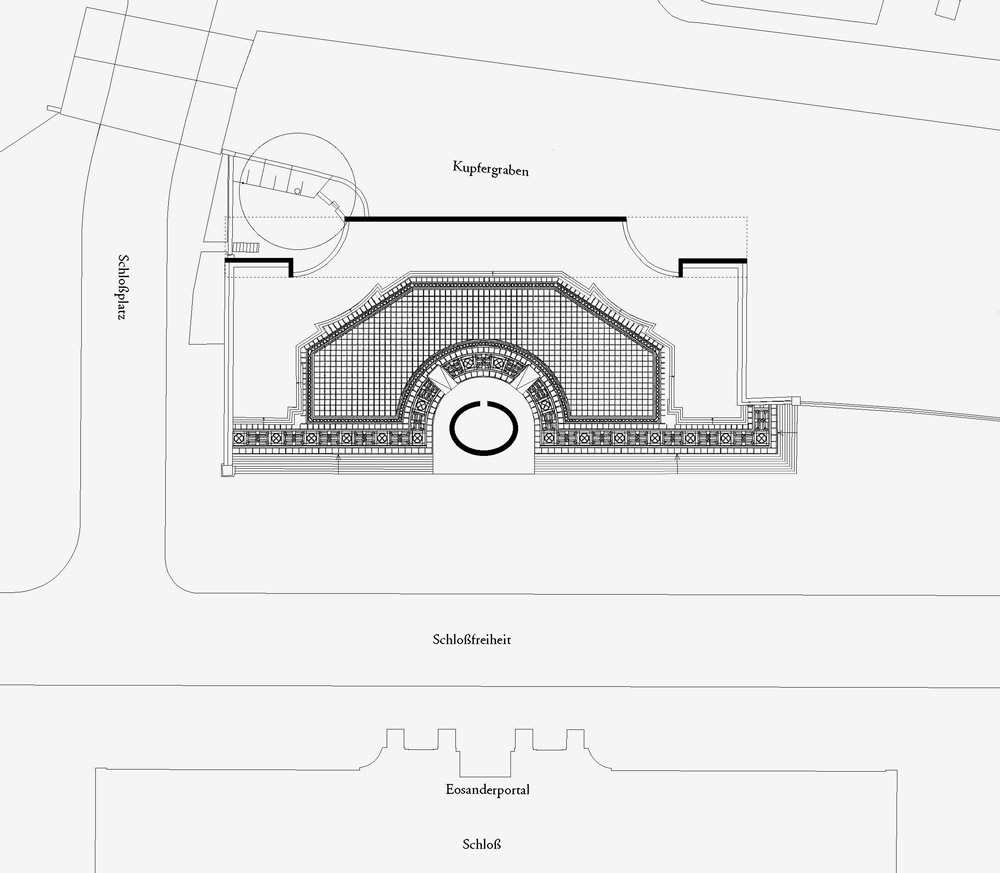
Floor plan: Integration of the mosaic floor preserved under an asphalt layer

Position of the monument opposite the palace facade, elevation

Monument to Freedom and Unity: Addition of an information pillar (Freedom Tree) and a room screen (Berlin Wall)

Variant with addition of the last remaining figures of the former Emperor William monument
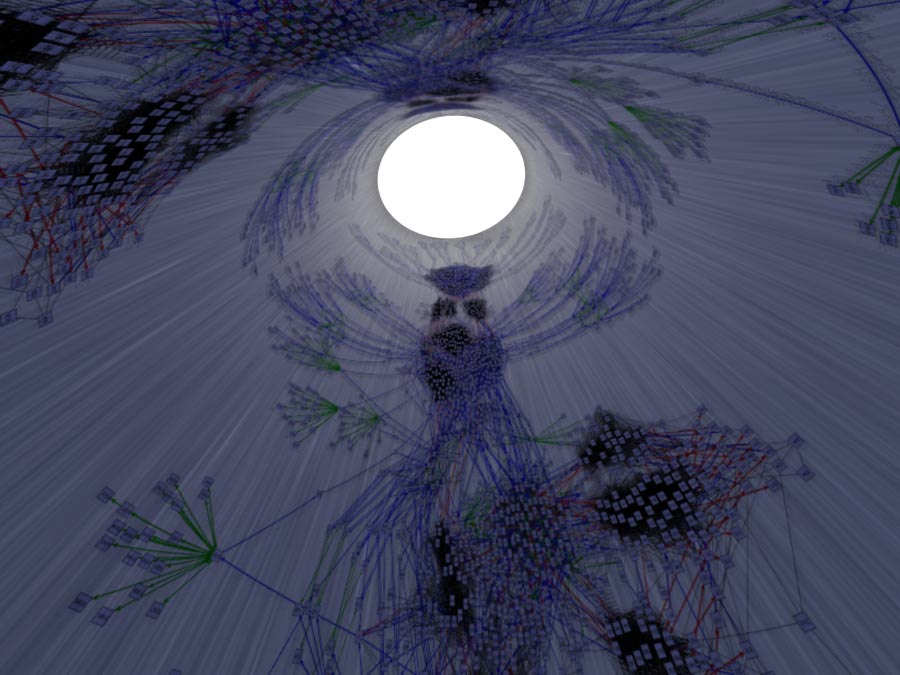
Ornamented column, inside
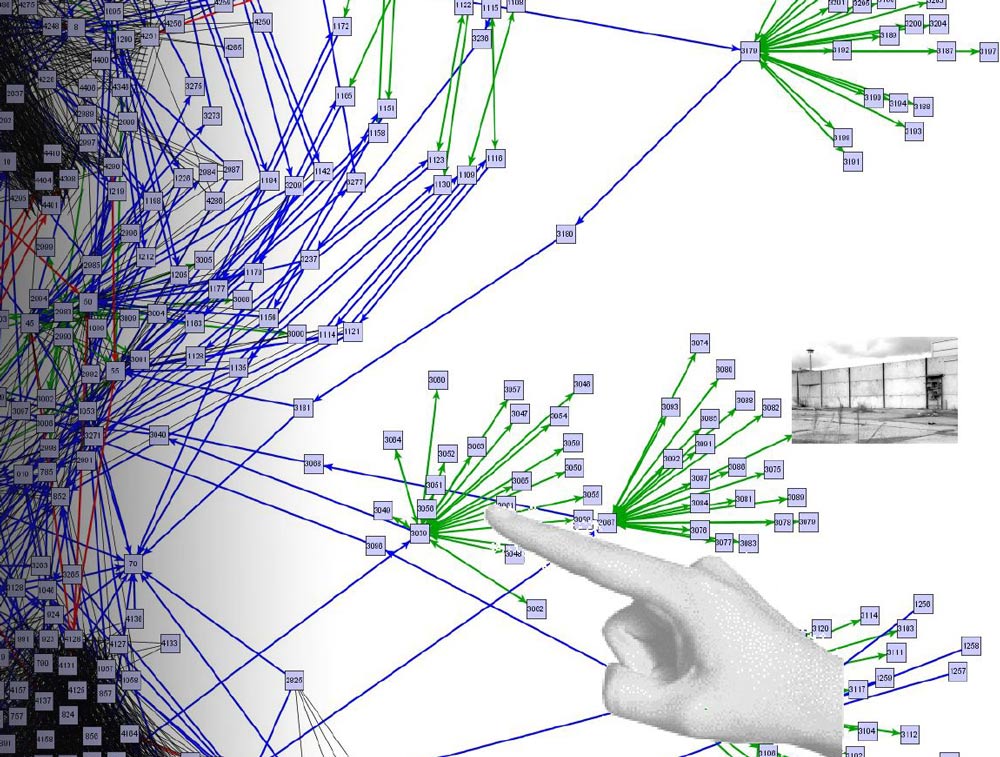
Remember, process and connect
| The monument as a comprehensible and interactive process
The basis for the memorial is a three-dimensional diagram that depicts the complexity of the German reunification process from 1989 to 1990 in a way that can be experienced by all visitors through an interactive user interface. The diagram, condensed as a spatial vector graphic, deliberately open to the sky, refers to the emblematic symbolism of the tree of liberty. The few preserved remains of the Kaiser Wilhelm monument, two eagles, two lions and a floor mosaic, are incorporated into the ensemble consisting of an information pillar and a colonnade of wall remains in order to make people aware of the significance of the site as a place of freedom and unity: An information column replaces the obsolete monument of a person. The structure of the past classicist colonnade is transformed into a spatial screen of varying permeability that recalls the Berlin Wall, the division of Germany and how it was overcome. In line with a changed understanding of remembrance culture and information needs, the walk-in image column opposite the Eosander portal of the rebuilt Berliner Stadtschloss implants itself not only as a physical body in the urban space, but also as a new virtual information medium of the 21st century. On its interior skin, the widely branching network of a spatial vector graphic illustrates the complex processes that led to the Peaceful Revolution and German reunification. The course of events, stations and participants are recorded and can be called up sensorially. The historical event of reunification becomes a perceptible phenomenon in which visitors can participate along different tracks. Depending on their approach interests, the sensor screens allow the corresponding information from the overall context of reunification to become visible. Visitors can determine their virtual information environment through individual hand movements. The monument individualises itself for each visitor, is dynamic and changeable. |
| Program | Memorial to commemorate the peaceful revolution, the German reunification and the Treaty on the Final Settlement with Respect to Germany |
| Status | Realization competition Exhibition of the works at Kronprinzenpalais, Unter den Linden 3, Berlin |
| Location | Berlin, Germany |
| Client | Federal Republic of Germany, represented by the Federal Office for Building and Regional Planning |
| Area | 1.000 m2 |
| Services | Program and location analyses, strategic development, artistic concept, technical concept, design planning, visualisation |
| Date | 2009 |

